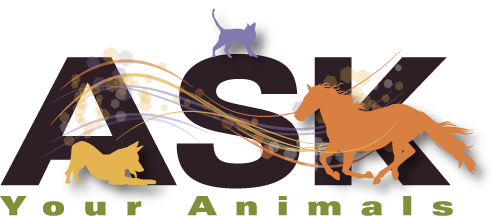Can you imagine being in an age where verbal communication wasn’t prevalent? All animals on Earth today, including the Human animal, evolved for most of its history relying solely on non-verbal communication. Some studies show that it was not until perhaps 50,000 years ago that humans developed a spoken language, while others say it could have been around for well over 200,000 years.
Today, Humans Focus On Verbal Communication, Not Body Language
Despite when scientists believe verbal language started being used, we have, by this time in our evolution, become quite focused and reliant on our verbal skills to communicate with others. Becoming ever more distant from our earlier knowledge and familiarity of the non-verbal, or body language of our ancestors. This deep ancestral knowledge of reading body language has not, however, gone away completely. It has just faded into the background of our awareness while we focus on the busy and loud human world we live in.
This loud, verbal world has left little attention remaining to focus on and “listen to” the subtle, silent, non-verbal “language” of our animal companions. The animals, however, have had little attention or use for our loud babble and have been developing and refining their non-verbal communication skills over thousands of years.
Each species has developed its own unique set of body language skills that include
- Eye contact and pupil dilation
- Head posture
- Ear position
- Body stance
- Facial expression
- Tail carriage and movement
These can be combined in an infinite number of combinations to express the feelings, intentions, and ideas that they need to convey to friends or foes.
Animals Rely on Body Language and Sounds
Many species have also developed sounds to use along with their body language, such as barks, meows, nickers, and chirps, but these are used as a nuance to the primary non-verbal language in most species. In fact, many scientists still do not qualify them as language because they lack some of the defining characteristics of language, such as grammar and syntax.
Some animal species are considered “vocal learners” that can mimic human speech, such as parrots, dolphins, and beluga whales, yet this is usually not considered “language” but an excellent imitation of human speech. These animals do not use human speech to communicate with their own kind, just with humans as they are taught.
Miscommunications Between Pets and Their Owners
“Whether we speak the same language or not, the most important thing is that we strive to understand one another.”
Many of us train verbal commands to our pets in an effort to make ourselves understood, and I believe that we should be making an equal effort to understand the unique signals of communication that are native to our animal companions.
In consultation with my clients, I find that many of the “problems” pet owners experience with their family pets are due to miscommunication between the two species. We speak and expect our pets to understand our meaning, yet we are often completely unaware of the language they are attempting to share with us – the non-verbal language of their own species.
The Importance of Understanding Your Pet’s Body Language
One might see a dog wagging its tail and assume it is relaxed and happy, but that signal does not carry over to the language of a cat or horse. A cat wagging his tail conveys excitement or annoyance, and when a horse “wags” his tail, you better step back because he is quite irritated and may follow through with a kick.
Whether you have adopted an adult dog, are training a young horse, or trying to negotiate with the family cat, having the skills to notice and respond non-verbally will help to develop the relationship between you.
Developing a deeper relationship with our companion animals relies on developing accurate communication between us. After all, when traveling in a foreign country, speaking louder and slower in English is not the best way to break through the communication barrier. Take the time to learn about the subtle nuance of language and communication that is used by the one you wish to communicate with.
Any individual, whether human or animal, feels better when they can express themselves, be heard and understood, and understand in response. Developing this common communication system helps to develop trust in relationships and fosters a feeling of belonging and safety.
Resources for Pet Owners
Dog Owners
Imagine being able to tell when your dog is stressed and preventing a bite based solely on the dog’s body language. Well, you can! Here is a general guide to interpreting stress signals from your dog.
Cat Owners
Cat Daddy Jackson Galaxy breaks down what you need to know about cat body language in this video.
Horse Owners
To handle a horse safely, it is important to understand the changes in expression and posture that can tell you what they are thinking. You can read more here.
An animal communicator can also help you cultivate a deeper understanding between you and your pets by translating your thoughts and ideas into images and feelings that your pet can understand. Consider scheduling your personal consultation now.



